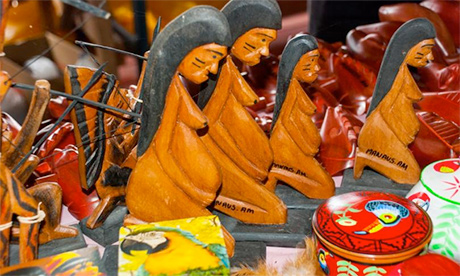Last week, Vatican Media interviewed Fr. Paulo Suess, a German priest who has served for decades among the indigenous peoples of the Amazon.
Fr. Suess is in Rome as an official of the Synod of Bishops on the Amazon, and is regarded there as an expert on the region.
The priest was asked about a ceremony held in St. Peter’s Basilica Oct. 7, which seemed to use both traditional Christian symbols and unexplained symbols of indigenous Amazonian culture.
“It is definitely the case that there is a noticeable sentiment against the synod on the part of certain media here…. Someone wrote that it was a pagan rite,” Fr. Suess responded.
“So what?” the priest asked. “Even if that had been a pagan rite, what took place was still a worship service. A rite always has something to do with worship.
“Paganism cannot be dismissed as nothing”.
“What is pagan? In our big cities we are no less pagan than in the jungle. That’s something to think about,” he said
Vatican Media eventually removed those comments from its interview with the priest, with no note or indication of the redaction.
Anyone who wants to understand how the Vatican’s synod of bishops on the Amazon has become such a flashpoint for controversy, or why five carved statues were removed from a Roman church and tossed into the Tiber River, should think carefully about Fr. Suess’ comments, and their publication by the official media organ of the Holy See.
On Oct. 21, five statues were taken, apparently quite early in the morning, from the Carmelite Church of Santa Maria in Traspontina, four blocks from St. Peter’s Basilica. They were thrown off a nearby bridge into the Tiber River.
On Friday the pope announced that they had been recovered, apologized to anyone offended by their submersion in the Tiber’s waters, and said they might make an appearance at Sunday’s closing Mass for the synod.
The statues had become recognizable to Catholics around the world. They were featured prominently in an Oct. 4 tree-planting ceremony that kicked off the Amazon synod. They have been a part of daily “moments of spirituality” at the Carmelite church. They have been inside St. Peter’s Basilica, at an Amazonian Stations of the Cross, and at many other events surrounding the Amazon synod and they have been alternatively described as symbols of the Blessed Virgin, the Andean pagan idol Pachamama, and ambiguous symbols of “life.”
At the synod, they are symbols of controversy.
Figures used prominently in unexplained and unfamiliar rituals or spiritual expressions, even with persons prostrating themselves in front of the statues, led journalists to ask what connections the figures have to indigenous religious rituals.
In short, to ask whether they have a pagan provenance, and, if so, what it means for them to be used in a Catholic context, and in the sacred space of a church.
The Church’s long-considered and nuanced views on inculturation are complex, and the Gospel is always expressed in the context of some culture. Continue reading
Additional readingNews category: Analysis and Comment.




